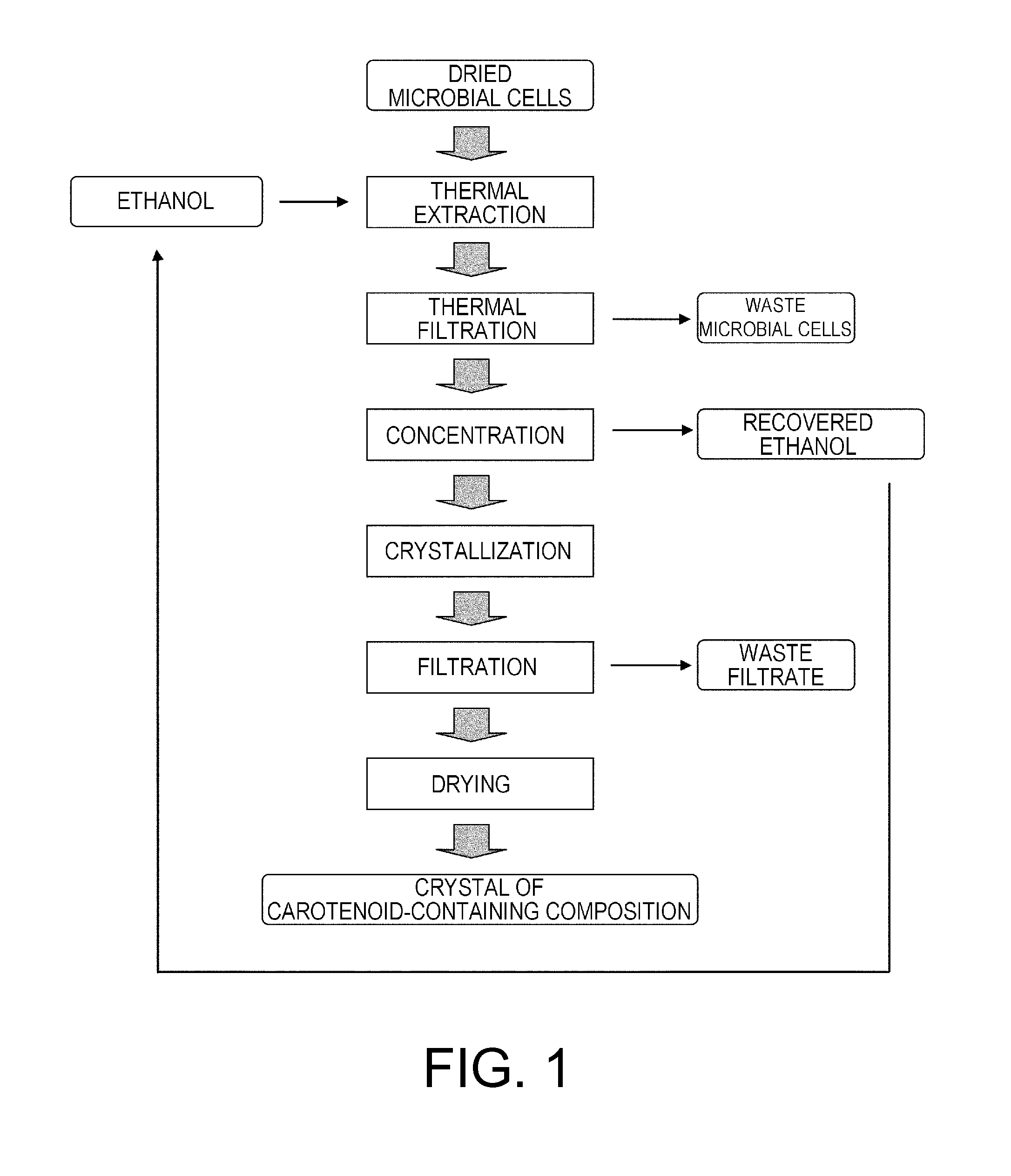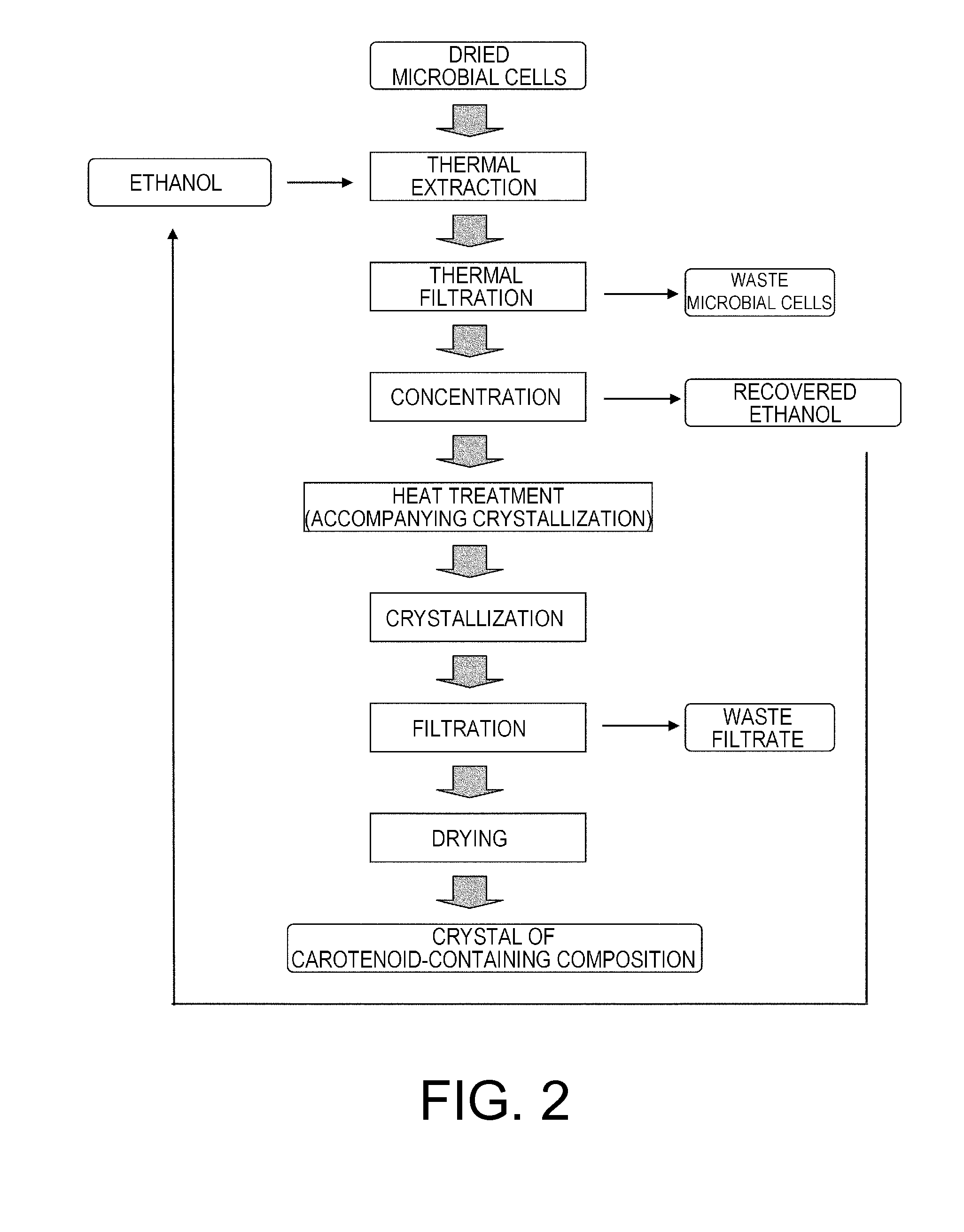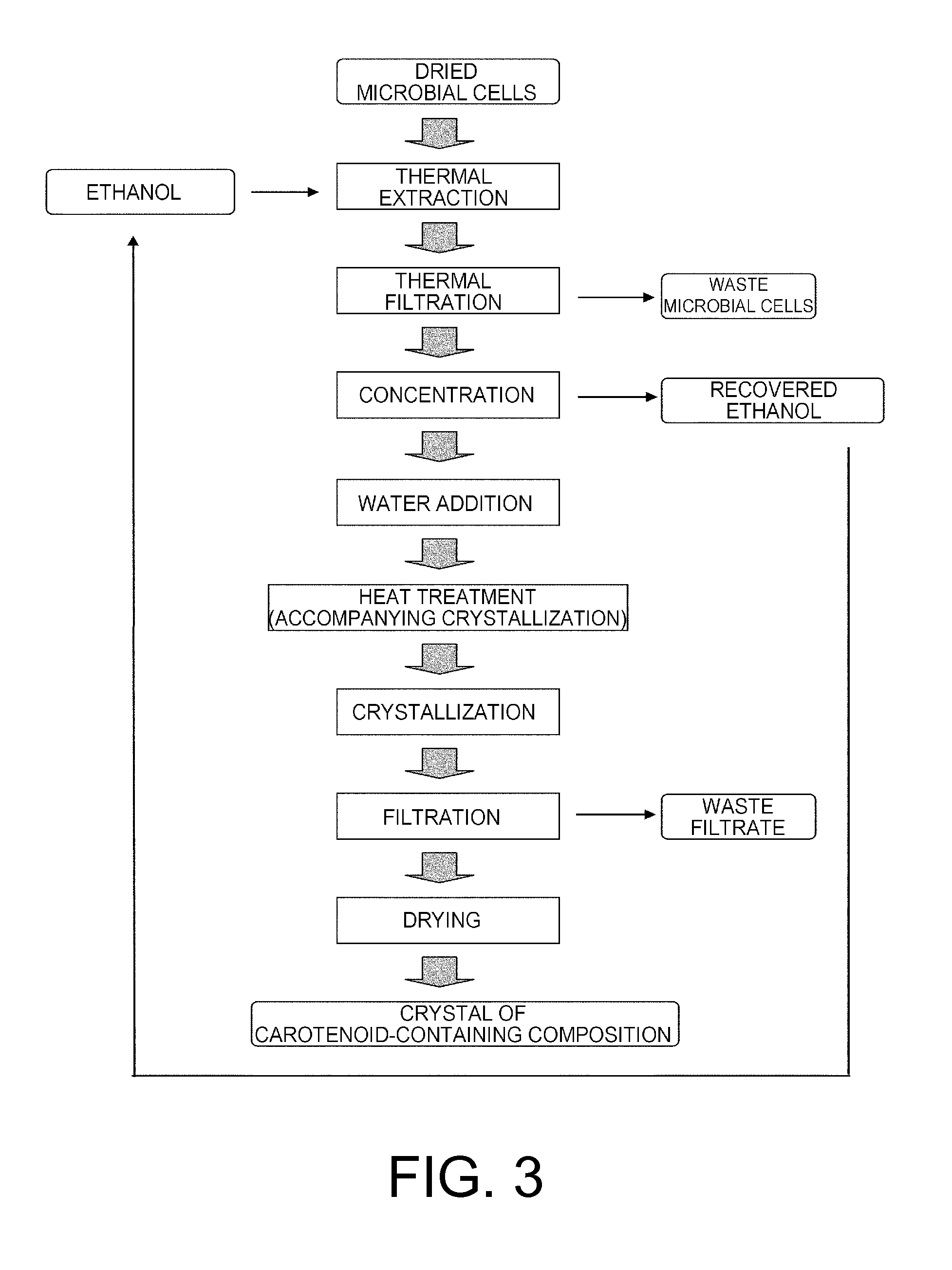Method for producing carotenoid-containing composition, and carotenoid-containing composition
- Summary
- Abstract
- Description
- Claims
- Application Information
AI Technical Summary
Benefits of technology
Problems solved by technology
Method used
Image
Examples
example 1
Production of a Highly Pure Carotenoid with a High Astaxanthin Content: 1 (FIG. 1)
Step 1: E-396 Strain Culturing Step
[0116]E-396 strain was cultured according to the method described in Example 1 of Patent Document 5, and dried bacterial cells containing carotenoids including approximately 17 mg of astaxanthin in 1 g of the cells as a culture were obtained.
Step 2: Ethanol Extraction Step
[0117]To 25 g of dried bacterial cells obtained in Step 1 of this Example, 550 g of ethanol was added and carotenoids including astaxanthin were extracted by stirring for 15 minutes at 90° C. under nitrogen atmosphere in a high-pressure vessel. After cooling the liquid temperature to 65° C., the pressure vessel was opened, bacterial cells were removed from the extract by filtration, and then the bacterial cell cake was washed with ethanol to obtain 550 g of extract with 0.07% (wt / wt) astaxanthin and 0.1% (wt / wt) carotenoids in terms of weight concentration.
[0118]Subsequently, a similar operation was ...
example 2
Production of a Highly Pure Carotenoid with a High Astaxanthin Content: 2
A Production Method that Comprises an Isomerization Step after the Concentration Step: FIG. 2
Step 1: E-396 Strain Culturing Step
[0125]Dried bacterial cells containing carotenoids including approximately 17 mg of astaxanthin in 1 g of the cells were obtained in a manner similar to the above-mentioned Step 1 of Example 1.
Step 2: Ethanol Extraction Step
[0126]550 g of a similar extract was obtained by an operation similar to the above-mentioned Step 2 of Example 1. Subsequently, a similar operation was repeated four more times to obtain a total of five batches of extract.
Step 3: Step of Concentrating the Extract, and Performing Heat Treatment (Incubation) and Crystallization
[0127]The extract obtained in Step 2 of this Example was subjected to reduced pressure adjustments to make the vessel temperature 30° C., and a portion of the ethanol was distilled off using a rotary evaporator so that the solid concentration be...
example 3
Production of a Highly Pure carotenoid with a High Astaxanthin Content: 3
A Production Method Comprising a Water Addition Step and an Isomerization Step Following Concentration: FIG. 3
Step 1: E-396 Strain Culturing Step
[0132]Dried bacterial cells containing carotenoids including approximately 17 mg of astaxanthin in 1 g of the cells were obtained in a manner similar to the above-mentioned Step 1 of Example 1.
Step 2: Ethanol Extraction Step
[0133]550 g of a similar extract was obtained by an operation similar to the above-mentioned Step 2 of Example 1. Subsequently, a similar operation was repeated five more times to obtain a total of six batches of extract.
Step 3: Steps of Concentrating the Extract, Adding Water, and Performing Heat Treatment (Incubation) and Crystallization
[0134]The extract obtained in Step 2 of this Example was subjected to reduced pressure adjustments to make the vessel temperature 30° C., and a portion of the ethanol was distilled off using a rotary evaporator so ...
PUM
| Property | Measurement | Unit |
|---|---|---|
| Temperature | aaaaa | aaaaa |
| Temperature | aaaaa | aaaaa |
| Length | aaaaa | aaaaa |
Abstract
Description
Claims
Application Information
 Login to View More
Login to View More - R&D
- Intellectual Property
- Life Sciences
- Materials
- Tech Scout
- Unparalleled Data Quality
- Higher Quality Content
- 60% Fewer Hallucinations
Browse by: Latest US Patents, China's latest patents, Technical Efficacy Thesaurus, Application Domain, Technology Topic, Popular Technical Reports.
© 2025 PatSnap. All rights reserved.Legal|Privacy policy|Modern Slavery Act Transparency Statement|Sitemap|About US| Contact US: help@patsnap.com



